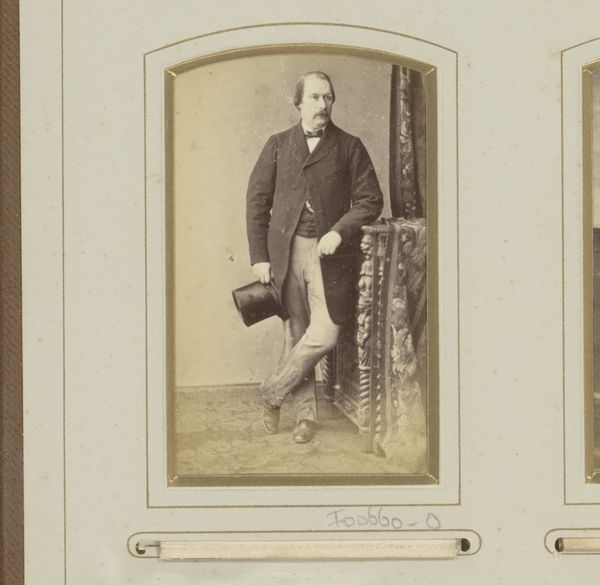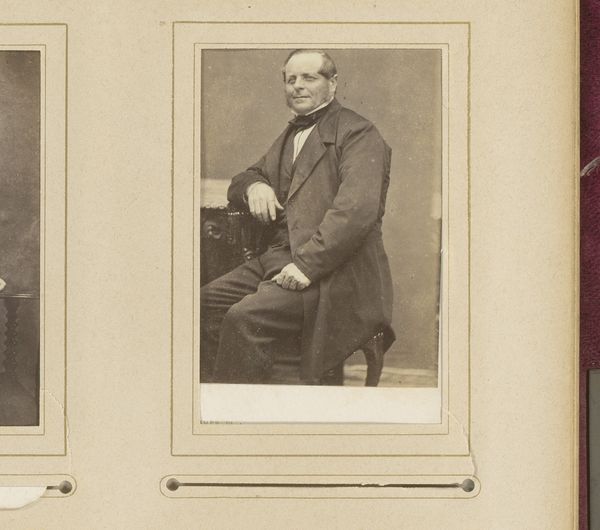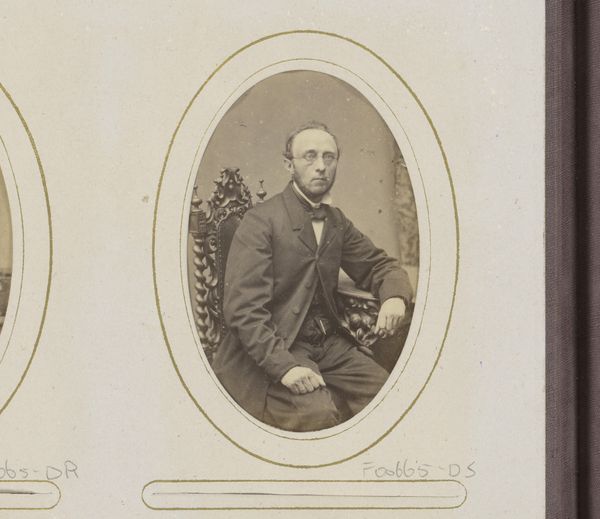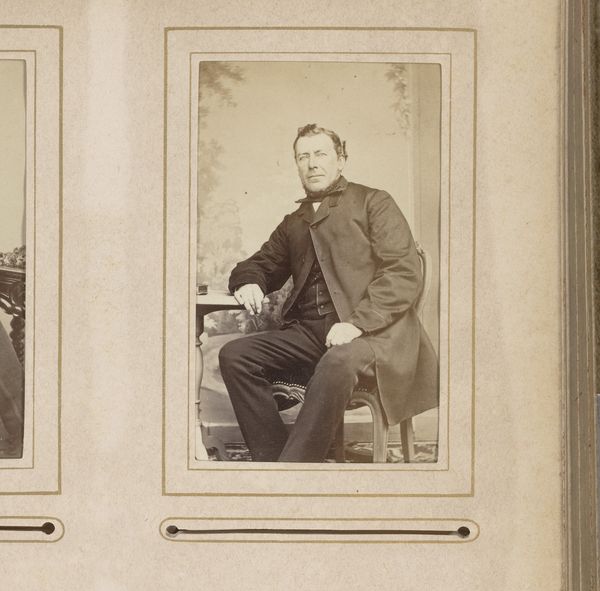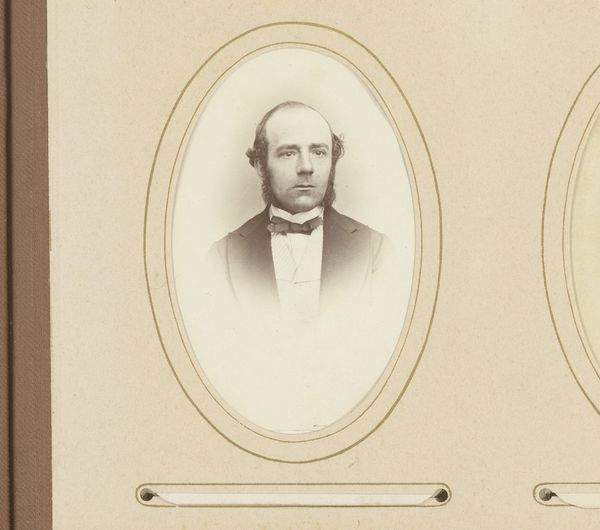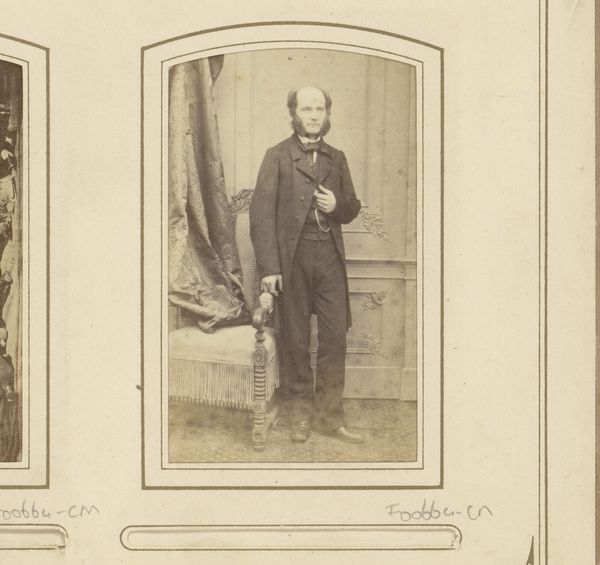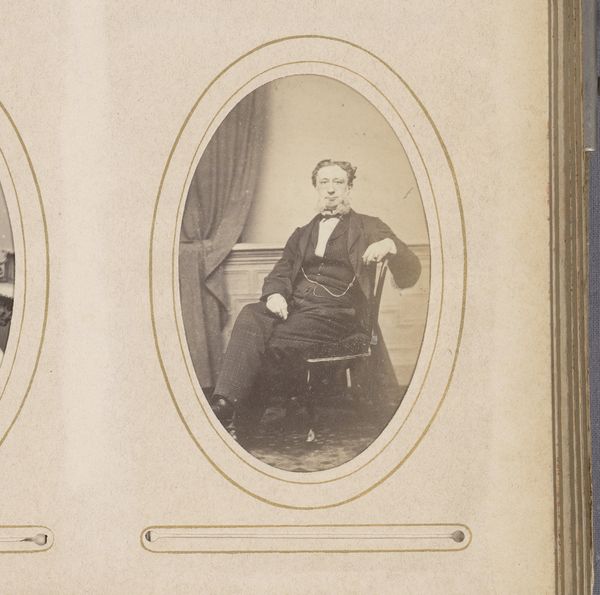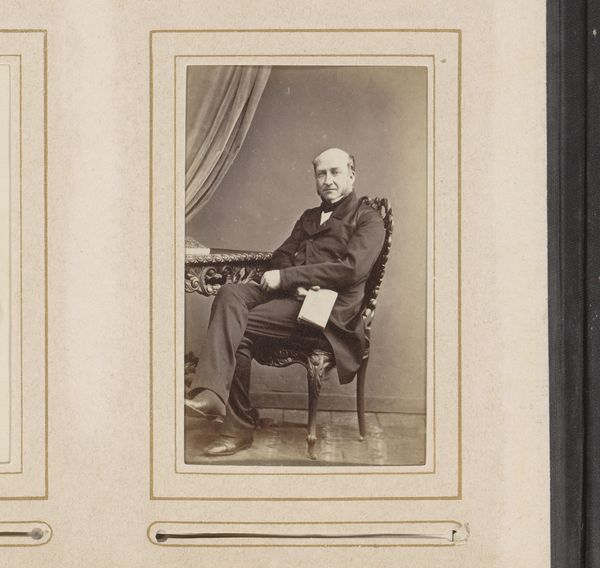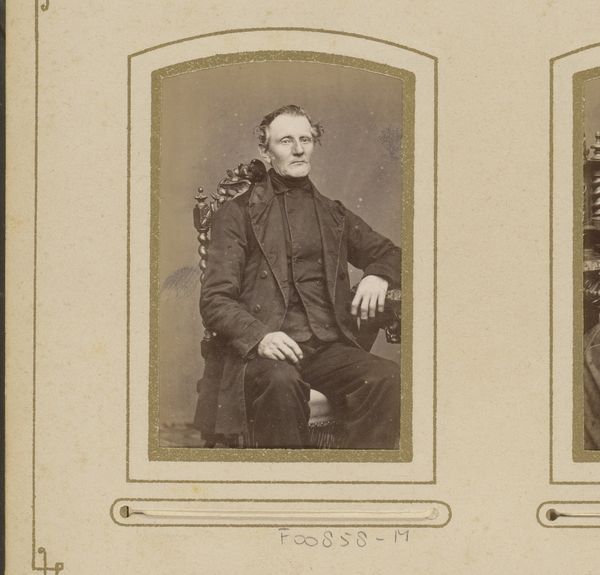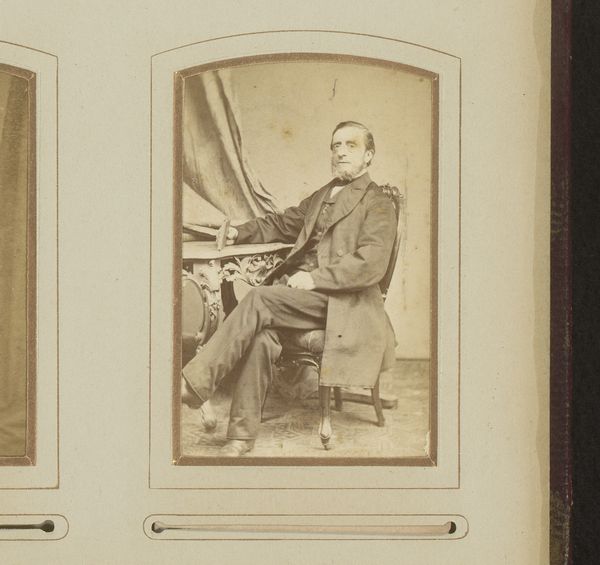
photography, gelatin-silver-print
#
portrait
#
archive photography
#
photography
#
historical photography
#
historical fashion
#
gelatin-silver-print
#
19th century
#
genre-painting
Dimensions: height 83 mm, width 50 mm
Copyright: Rijks Museum: Open Domain
Curator: This gelatin silver print, dated somewhere between 1861 and 1874, captures the "Portret van een zittende man met bril en bakkebaarden"—Portrait of a seated man with glasses and sideburns. Editor: What strikes me is how self-contained he seems, almost as if he's retreated into his own private world behind those spectacles. Curator: Well, consider the era. Photography was still relatively novel. Posing for a portrait wasn't like snapping a quick selfie; it was a deliberate act, a construction of identity. Think about the implications: who gets to be remembered and how? This is a portrait, which historically was reserved for royalty and nobility but then was adopted by the upper class, often white men such as this sitter. Editor: That's a crucial point. And he presents as quite the bourgeois gentleman! The serious brow, dark coat, the impeccably maintained sideburns framing his face… There's a definite air of respectable authority. Perhaps even a touch of melancholia? Curator: Or pensiveness, maybe? The lack of a beaming smile speaks to the constraints of photographic technology at the time—holding a forced grin for an extended period wouldn't be ideal, plus social conventions. Editor: Good point! The sepia tones soften the features somehow. It's as if the past is gently veiling this person. One has to think about what story that era actually tells of gendered expectations that impacted men. There’s still an immense societal expectation that men suppress their emotional experience; can we read this emotional suppression on his face in that look of pensiveness, or his controlled body language, and even in the composition? Curator: It brings forward all of the unspoken social requirements, certainly. The formal composition locks him in history as someone noteworthy, even as his face as is unknowable in many ways. I’m drawn into his experience with that controlled intensity! He would have been on the precipice of major social changes that came with the rise of industrialization. It almost makes one ask if it has really all been worth it. Editor: Beautifully put. What was it like for him, a white male subject in the mid-19th century? Pondering all this does offer a powerful counterpoint for today. Curator: It certainly encourages empathy beyond his individual image—seeing ourselves and our contemporary experiences in him too.
Comments
No comments
Be the first to comment and join the conversation on the ultimate creative platform.

